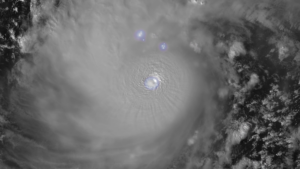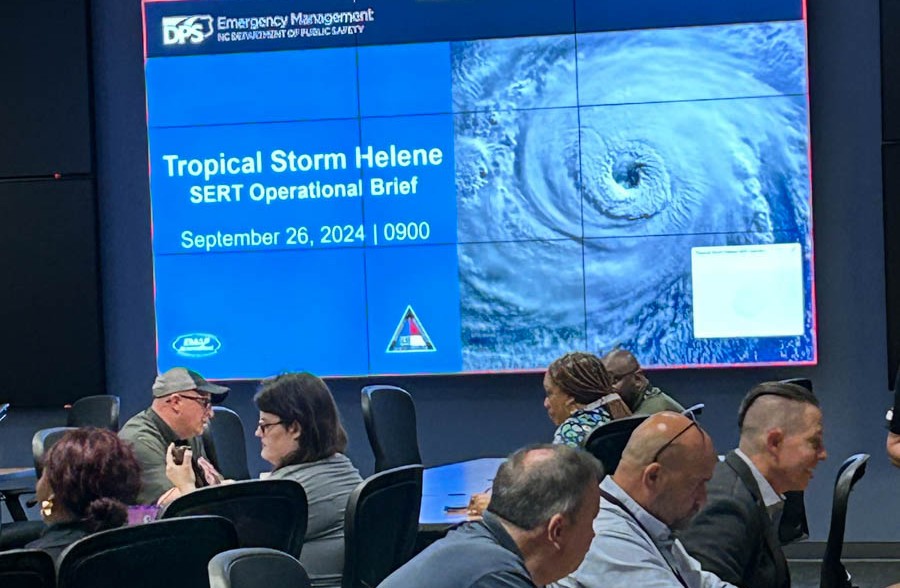Hurricane season returns this June, as it does every year, bringing new forecasts and predictions, and the anxious wait for real-world impacts. The climate is changing and with it hurricanes are getting more powerful and destructive. And many states are still reeling from last year’s storms.
“Last year we saw one of the costliest hurricane seasons ever, and a lot of that was Hurricane Helene, and the damage that it caused, to the tune of about $78 billion,” says Joe Veyera, Factal’s North America lead editor. “We are still waiting on a full recovery from Helene in places like western North Carolina, where we saw severe flooding that led to hundreds of deaths.”
Hurricane Milton followed weeks after Helene, leading to widespread evacuations across Florida and millions without power. The responses to both storms were subject to significant misinformation online.
“There was even concern for the safety of the emergency responders themselves, because of the misinformation that was going around,” Veyera said. “Some people had just come to think that they were not there to help.”
Last year’s hurricanes were extremely challenging, and predictions for 2025 don’t offer much relief. Forecasters have said there could be up to 17 named storms, nine hurricanes and four major hurricanes in 2025, which puts the overall storm activity at way “above normal.”
Crucially, this year, there is a brand new force at play: the second Trump administration. This White House is leading the most widespread job cuts to the federal workforce in recent memory. And they are slashing agency program budgets at the same time.
Veyera says this poses two main questions for the 2025 hurricane season:
Are we going to have less reliable forecasting?
Two services being hit hard by deep cuts to jobs and grants are the National Oceanic and Atmospheric Administration (NOAA) and the National Weather Service (NWS). These agencies study the climate, predict the weather and inform warning systems.

“We have seen some cuts already, but some of the deeper ones are probably still to come,” Veyera says.
Climate science research programs are at particular risk of being cut, as the administration’s climate change skepticism is baked into policies across government.
“To not have climate studies fully funded is going to have a particular impact on hurricane research and forecasting, “ Veyera says. “We have the pretty basic scientific consensus that rising water temperatures in the ocean are going to lead to more powerful storms and more frequent storms. If you stop researching these basic tenets, what does that do for everything else down the line?”
In the past 10 years, major storm forecasts have become extremely advanced. The 2024 hurricane predictions were the most accurate ever. Accurate forecasts enable early warnings to evacuate or move to higher ground, which can save the lives of people in the path of a storm. But if the forecasting is compromised, then the warnings could be too.
“If there are fewer forecasters in the federal government, and if they do not have access to the same level of resources, what is that going to mean for the predictions?” Veyera asks. “Will these predictions impact the warning system, and lead to more damage, more injuries, more deaths? These are key questions.”
Veyera will present the Atlantic hurricane season forecast during the June 5 Global Security Briefing, the industry’s largest virtual event for security and risk professionals. Register here and gain access to free briefings and recordings on security threats, geopolitical developments and emerging risks.
Will the federal government refuse state aid requests?
There is real uncertainty over how this government will handle emergency funding requests from states after a storm has hit, Veyera says. This President Trump has proven he is willing to say no. When Washington state faced the impacts of a “bomb cyclone” and Arkansas was hit by deadly tornadoes, earlier this year, he denied both governors’ requests for federal support, at least initially.
“This is very unusual,” Veyera says. “We just didn’t really see those rejections under previous presidents.”
As the White House makes cuts to the federal government, FEMA – responsible for coordinating federal emergency response – is among the agencies being specifically targeted.

During the visit to North Carolina in January, Trump gave a speech in which he stated he was considering “overhauling FEMA or maybe getting rid of FEMA” altogether, describing it as a “disaster” and a “disappointment”.
Since then, no formal plans have been announced for the closure of FEMA, but there have been workforce reductions at the agency and major cuts to its grant programs. The acting head of FEMA was fired in May after breaking with Trump, plunging the organization into further disarray. A recent report, citing an internal FEMA memo, said the agency was “not ready” for the 2025 hurricane season.
This will be the seventh hurricane season Veyera has covered for Factal. And the most uncertain.
“It is an open question as to what the future of disaster management looks like in the United States,” he says.
“Will forecasting be good enough to get warnings to people before a storm hits? And then after those storms hit, are we going to see the federal government provide states with the funding they need to recover? Those are questions that I don’t think have satisfying answers.”
Factal gives companies the facts they need in real time to protect people, avoid disruptions and drive automation when the unexpected happens.
Try Factal for free or talk with our sales team (sales@factal.com) for a demo.

